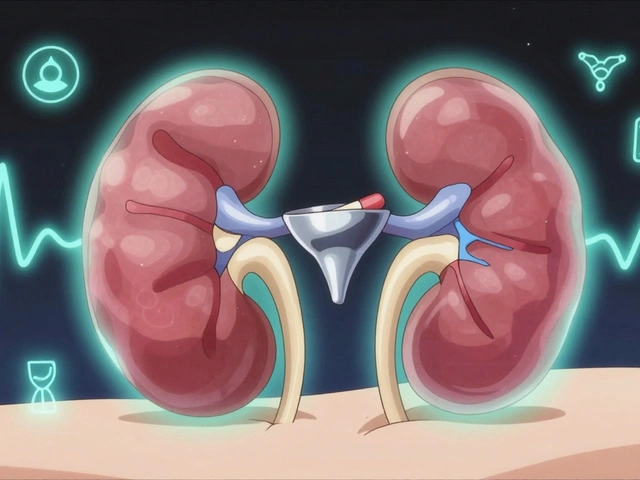Antidepressants: Types, Safety Tips, and How to Choose the Right One
Feeling unsure about antidepressants is normal. You want something that helps with mood, sleep, or energy without causing new problems. This page gives clear, practical facts about common antidepressant types, what side effects to expect, how long they take to work, and smart safety steps when starting or switching medications.
Types and how they work
Antidepressants aren’t all the same. The main groups you’ll hear about are:
- SSRIs (sertraline, fluoxetine, escitalopram): Often first choice. They raise serotonin and usually have milder side effects.
- SNRIs (venlafaxine, duloxetine): Work on serotonin and norepinephrine. Can help pain plus mood but may raise blood pressure in some people.
- TCAs (amitriptyline, nortriptyline): Older drugs that can be very effective but bring more side effects like drowsiness or dry mouth.
- MAOIs (tranylcypromine): Rarely used now because of food and drug interactions, but can help when other drugs fail.
- Atypical antidepressants (bupropion / Wellbutrin): Boost energy and focus, and may cause fewer sexual side effects.
Most antidepressants take 4–8 weeks to show full benefits. Don’t stop early — patience matters, but also keep your prescriber updated on progress and side effects.
Safety, side effects, and buying tips
Side effects vary by drug class. SSRIs/SNRIs can cause nausea, sleep changes, or sexual side effects. TCAs may cause dizziness and blurred vision. MAOIs need strict food rules and can react badly with many other meds.
Watch for warning signs: new or worsening suicidal thoughts (especially in people under 25), severe mood swings, or signs of serotonin syndrome (confusion, fast heart rate, high temperature). If any of these appear, contact your doctor or emergency services right away.
If you’re switching drugs, your doctor will guide the timing. Some drugs require a washout period to avoid dangerous interactions — MAOIs are the classic example. Don’t stop or switch on your own.
Buying medication online? Use pharmacies that ask for a valid prescription, show clear contact info and licensure, and have secure checkout. Avoid sellers that offer powerful medicines with no prescription. For advice about specific drugs and safe online buying, see our guides like “Where and How to Buy Tranylcypromine Online” and “Exploring 2024 Alternatives to Wellbutrin SR.”
Final practical tips: keep a symptom diary, report side effects promptly, don’t mix alcohol with many antidepressants, and let your prescriber know about other meds or supplements you use. With careful choices and follow-up, antidepressants can be an effective part of getting back to normal life.
Best Alternatives to Wellbutrin for Patients with Anxiety: Medications with Lower Stimulation Risks
Discover anxiety-friendly alternatives to Wellbutrin. This guide compares medications with lower stimulation risk, helping anxious patients find a better fit.
Exploring Alternatives to Citalopram: What You Need to Know
Navigating the world of antidepressants can be a complex task, especially when seeking alternatives to Citalopram. This article dives into various options, offering insights into their mechanisms, benefits, and potential drawbacks. By understanding these alternatives, you'll be better equipped to discuss options with your healthcare provider and make informed decisions about your mental health treatment.







